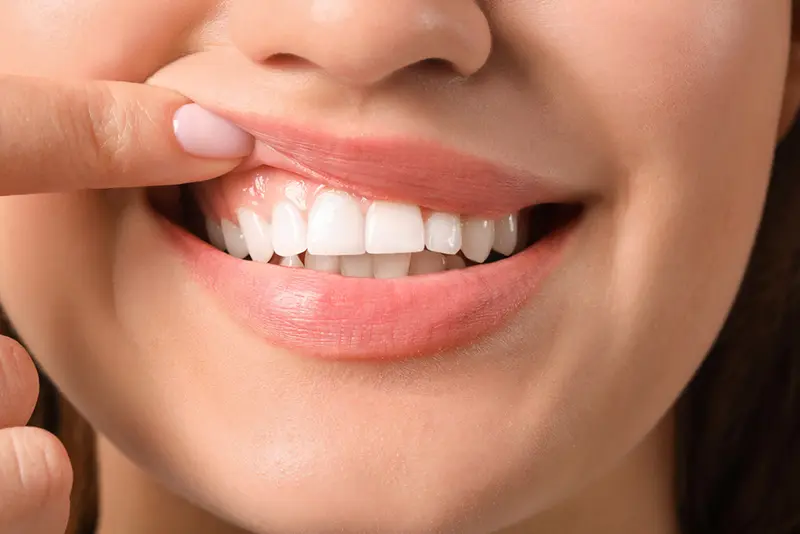What is Gingival Recession (Periodontitis)?
Periodontitis is a serious gum infection that damages the soft tissue around the teeth and, if left untreated, can destroy the bone that supports the patient’s teeth. Gum recession (periodontitis) can lead to loose teeth or tooth loss.
What are the Symptoms of Gum Recession (Periodontitis)?
- Swollen or puffy gums
- Bright red, dark red or purplish gums
- Bad breath
- Painful chewing
- New gaps that develop between teeth
- Diş fırçalarken veya diş ipi kullanırken kan tükürmek
- Sensitive gums
- Loose teeth or tooth loss
- A change in the way your teeth close when you bite down;
- Gums that bleed easily
How to Diagnose Gum Recession (Periodontitis)
The dentist will first perform an examination to determine whether the patient has receding gums and, if so, how severe they are. It will check the individual’s mouth to check for plaque and tartar build-up and easy bleeding. It will measure the pocket depth of the groove between the gums and teeth in various parts of the mouth.
In a healthy mouth, the pocket depth is usually between 1 and 3 millimeters. Pockets deeper than 4 millimeters may indicate the presence of periodontitis. Pockets deeper than 5 millimeters cannot be cleaned well and may require further intervention. Dental x-rays are taken to check for bone loss.
How to treat receding gums?
Gum recession treatment can be performed by a dentist. Successful treatment also requires a daily routine of good oral care and stopping tobacco use. If gum recession has not progressed, tartar and bacteria can be scraped off the tooth surface with the help of instruments, laser or ultrasonic devices. However, if the individual has advanced gingival recession, gingival surgery may be required in consultation with a gingival disease specialist during the treatment process.
Accordingly, flap surgery, i.e. pocket reduction surgery, can be performed. When the patient loses gum tissue, the gum recedes. Some of the damaged soft tissues may need to be strengthened. For this, soft tissue grafts can be applied.
This is usually done by removing a small amount of tissue from the individual’s palate or using tissue from another source and transferring it to the affected area. This can help reduce further gum recession, cover exposed roots and give your teeth a more pleasing appearance. The bone graft helps prevent tooth loss by holding the tooth in place. It also acts as a platform for natural bone regrowth.
Lifestyle Changes and Home Care for Receding Gums (Periodontitis)
First of all, the patient should brush their teeth at least twice a day, ideally once in the morning when they wake up and once at night before going to bed. The patient should use a soft toothbrush and change the brush at least every three months. Electric toothbrushes may be more effective at removing plaque and tartar. Floss at least once a day (preferably at night before going to bed).
Mouthwash can be used to help reduce plaque. Regular professional dental cleanings should be performed according to a schedule recommended by the dentist, usually every 6 months. Smoking and tobacco use should be avoided as the second most important factor. These cause dry mouth and bacterial growth.
